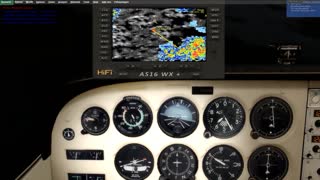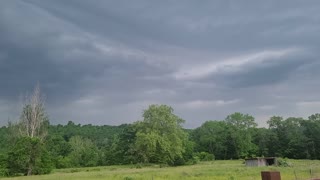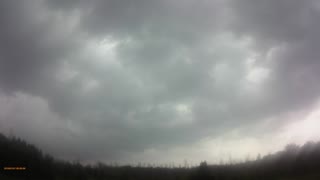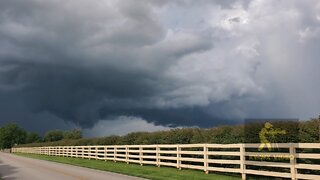Clear Skies Ahead? Thunderstorms and Air Travel
Thunderstorms are no joke, especially when you're cruising 35,000 feet in the air. As much as we love the sound of thunder and the flash of lightning from the safety of our homes, the same cannot be said for our dear friends up in the sky. Yes, we're talking about the pilots, the flight attendants, and most importantly, the passengers. Thunderstorms can be a real concern for aviation, and not just because they might spill your complimentary drink.
When you're up in the air, a thunderstorm can pose a serious threat to the safety of a flight. The hazards range from lightning strikes and turbulence to wind shear and hail, and it's not just a matter of a bumpy ride. Thunderstorms can cause significant damage to aircraft, leading to delays, cancellations, and in rare cases, accidents.
So, if you're a frequent flyer, you might be wondering how worried you should be about thunderstorms. Don't panic just yet, because we're here to give you the lowdown on how technology is helping to keep us safe in stormy skies.
Thunderstorms - Mother Nature's way of showing off her impressive sound and light show. But, there's more to these electrifying events than meets the eye (or ear). A thunderstorm is a complex weather phenomenon that's caused by an updraft of warm, moist air that collides with cooler air, leading to the formation of towering cumulonimbus clouds.
Now, these clouds might look fluffy and harmless from the ground, but when you're flying through them, things can get pretty intense. Lightning is one of the most well-known dangers associated with thunderstorms, and for good reason. A lightning strike can cause significant damage to an aircraft, leading to system failures and even fires.
But, lightning isn't the only hazard that pilots need to watch out for. Turbulence, or the sudden and unpredictable changes in wind speed and direction, can be jarring for passengers and potentially dangerous for the aircraft. And then there's wind shear, which is a sudden change in wind direction or speed that can cause an aircraft to lose altitude or gain speed unexpectedly.
Thunderstorms and aviation don't mix quite as well as peanut butter and jelly. For starters, thunderstorms can cause significant delays and cancellations for passengers who are eager to get to their destinations. But, it's not just about the inconvenience of waiting for hours on end at the airport. Thunderstorms can also pose safety concerns for both passengers and crew.
When it comes to different aspects of flying, thunderstorms can affect everything from takeoff and landing to cruising altitude and navigation. During takeoff and landing, pilots need to be extra careful because thunderstorms can cause sudden gusts of wind that can throw an aircraft off course. And, let's be honest, nobody wants to experience a bumpy ride during landing, unless you're one of those adrenaline junkies.
#thunderstorms #airtravel #clearskies
⏭️Follow us on:
▶️TikTok: @technationjournal
📩Twitter: @technationJ
📸Instagram: @technationjournal
📸Facebook : @technation
Also, don't forget to subscribe to our YouTube channel for more videos on technology and innovation at : https://www.youtube.com/channel/UCZLui0mEz6138-x6Uuwr4SA
Best Deals:
⏭️ Get Your Amazon Prime Video Free Trial = https://amzn.to/40StzGt
⏭️ Prime Video Channels Free Trial = https://amzn.to/40V8Hyt
⏭️Amazon Music Unlimited for 3 Months = https://amzn.to/40ME924
⏭️Prime Day Deals = https://amzn.to/3K6yxsn
⏭️Amazon Fire TV 2-Series = https://amzn.to/43b5gWu
⏭️Save on Amazon Smart Home Devices = https://amzn.to/3m1yvKw
⏭️ Kindle Unlimited Reading = https://amzn.to/40S6N1F
-
 10:53
10:53
Shawn M 1000
1 year agoDistant Thunderstorm, Light Rain, Wind 6-13-15
2 -
 0:36
0:36
ShannonBelk
4 years agoThunderstorms arriving
19 -
 1:00:03
1:00:03
El Tico NetWorks & HVAC!!!
3 years agoMicrosoft Flight Simulator - Detour Around Thunderstorm!!!
22 -
 17:40
17:40
The Zephaniah Ministry
7 months agoThe Storm Is Passing Over
5 -
 11:49
11:49
ALPSTaurus
1 year agoThunderstorms moving in 🌩🌩🌫🌫
30 -
 0:31
0:31
VillainGarage
1 year agoStorm clouds
10 -
 1:20
1:20
ALLENTVCHANNEL67
2 years agoStorm Clouds
734 -
 1:09:24
1:09:24
AliceOfNightCity
6 months agoClear Skies
15 -
 0:59
0:59
Kentucky Weather Video
1 year agoChasing Kentucky Storm Clouds
3 -
 1:21:52
1:21:52
The Great White North
7 months agoStorm Clouds Gathering
5533